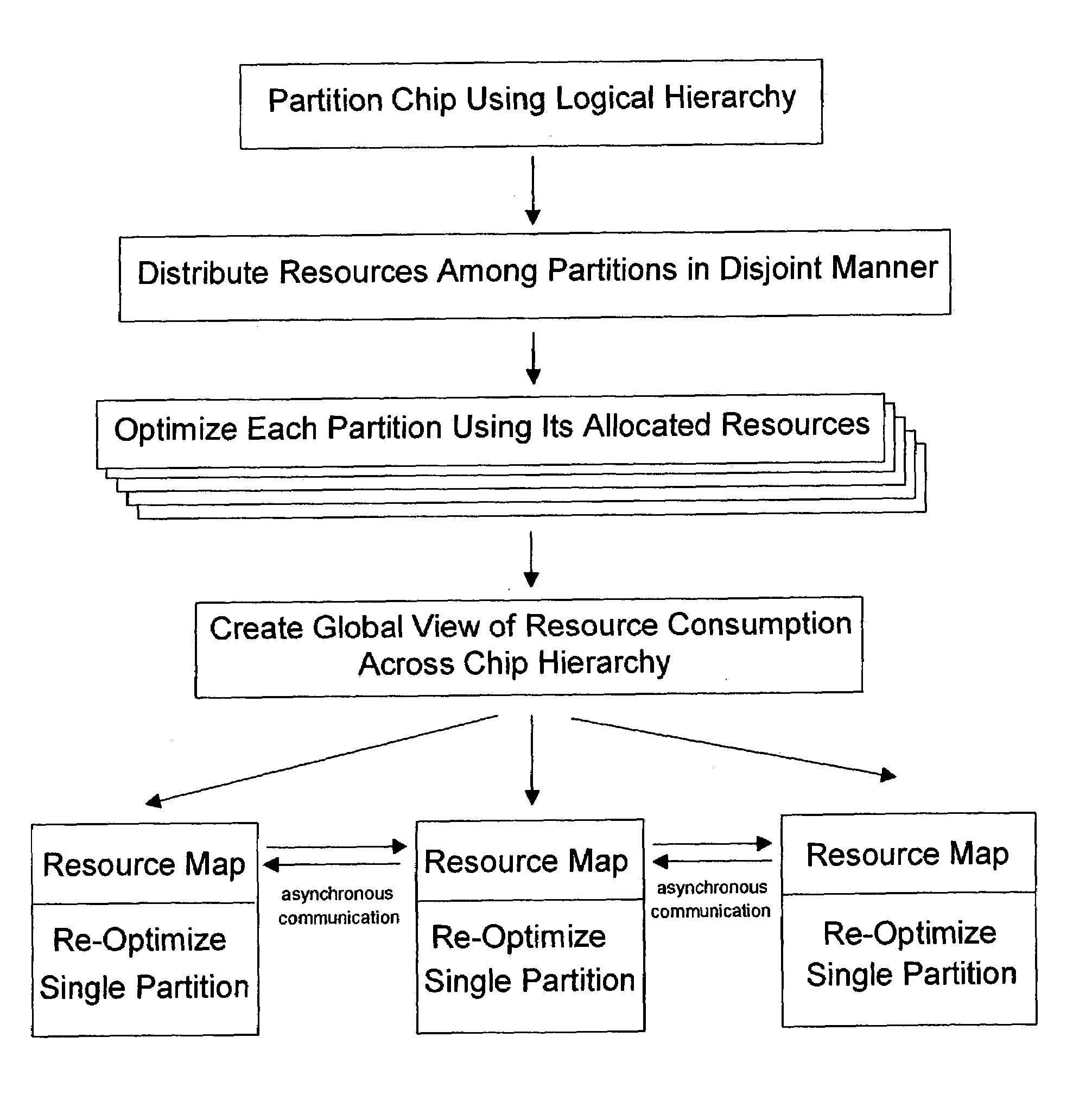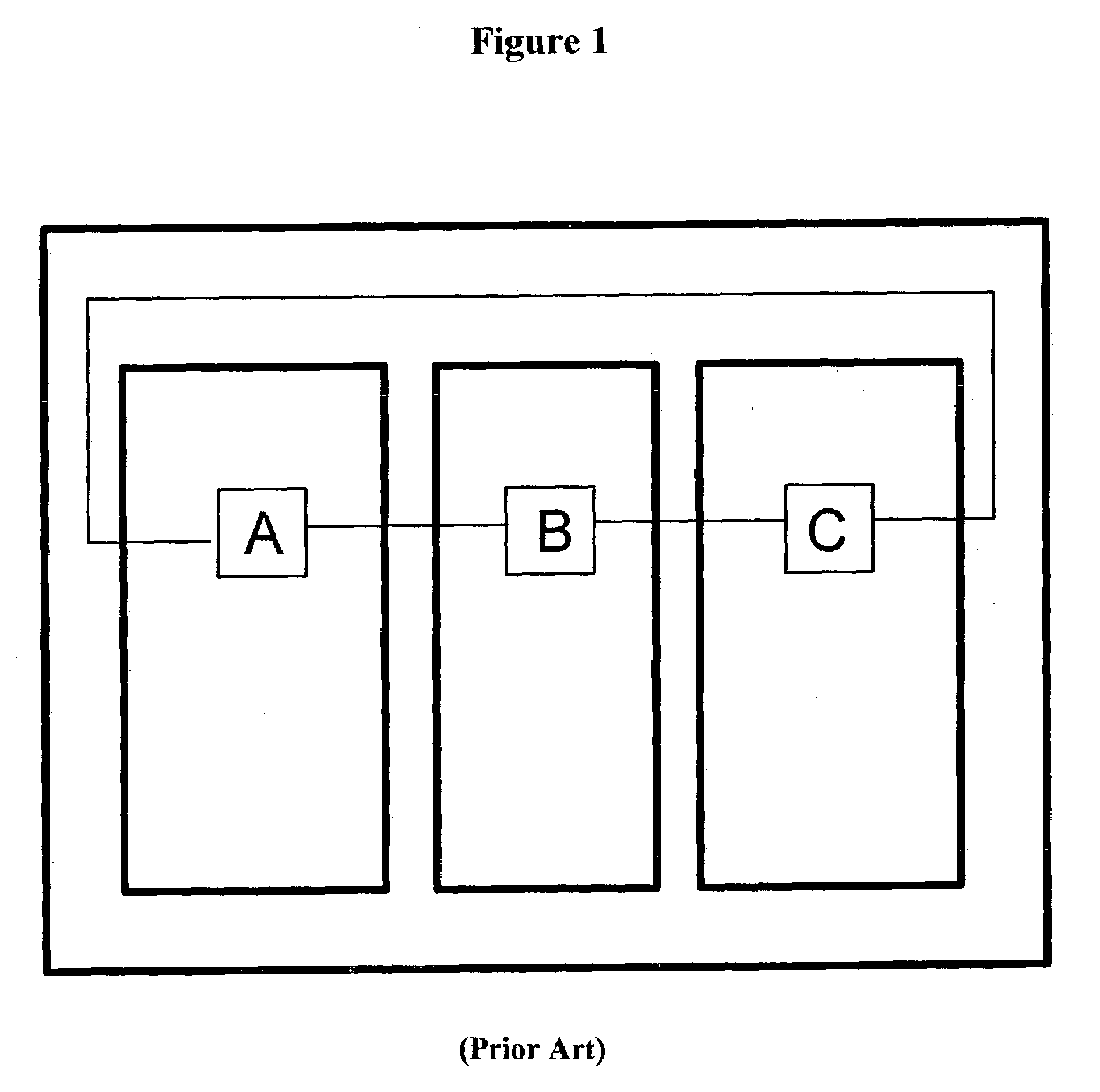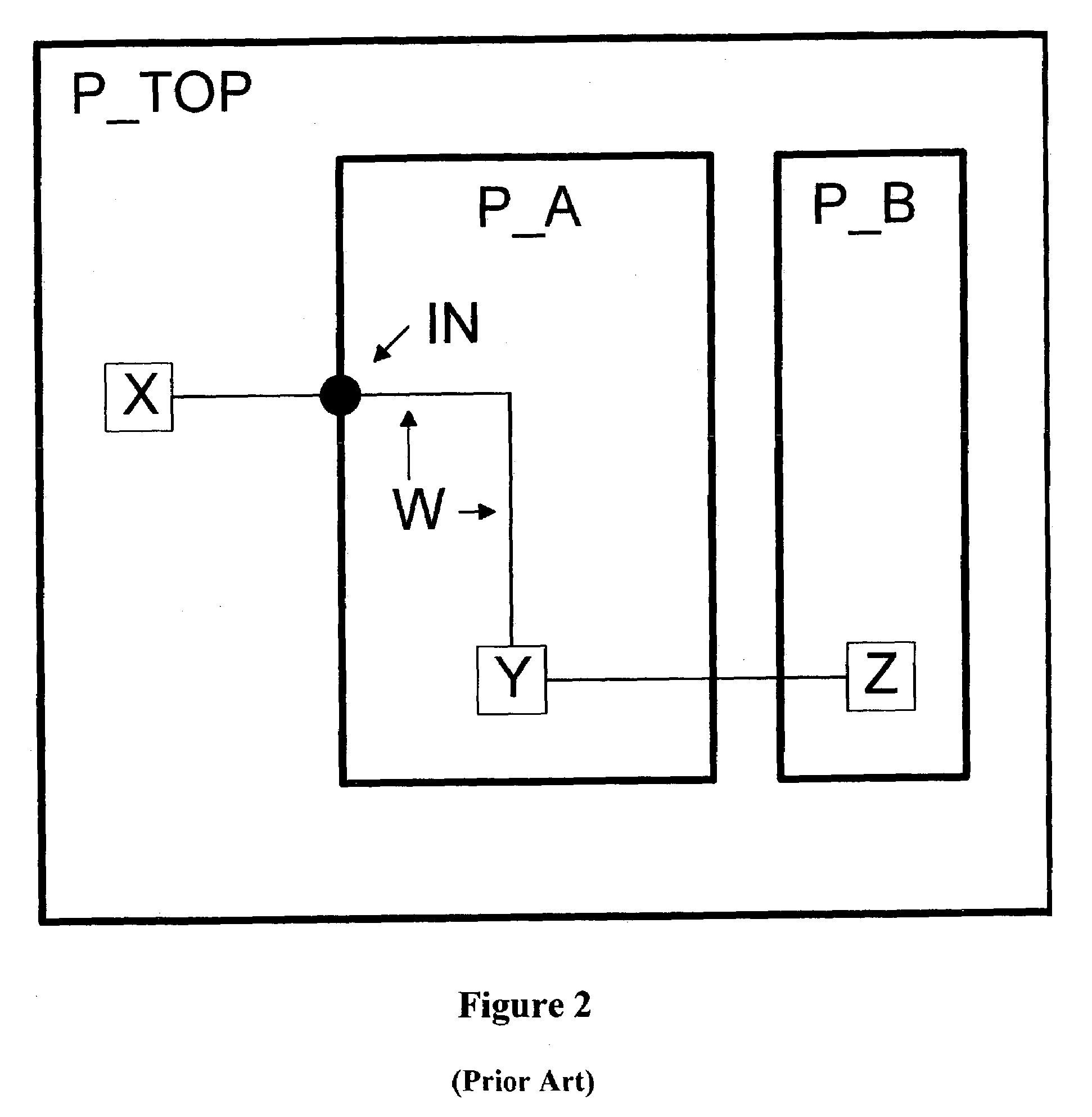Method for performing timing closure on VLSI chips in a distributed environment
a technology of vlsi chips and distributed environment, which is applied in the direction of computer aided design, program control, instruments, etc., can solve the problems of change in chip state and inability to achieve initial distribution of resources, and achieve the effect of improving the quality of the final resul
- Summary
- Abstract
- Description
- Claims
- Application Information
AI Technical Summary
Benefits of technology
Problems solved by technology
Method used
Image
Examples
Embodiment Construction
[0026]The inventive method described hereinafter follows the sequence of basic steps illustrated in FIG. 3.[0027]1. The process begins with a hierarchical design. A small number of partitions implies that the size of the average partition is large and, thus, will impact the run time. As the number of partitions increases, the sub-problem size may decrease, although the communication complexity will increase.[0028]2. An initial distribution of physical and timing resources is performed. This initial distribution is in the form of hard hierarchical boundaries designed to bring about a near optimal result. The resources are allocated in a disjoint manner that allows each partition to be optimized independently from each other.[0029]3. Each partition is processed in parallel using the initial fixed resource allocation. The purpose of this step is to bring the chip as close to the final result as possible. However, the inflexible hierarchical boundaries may have prevented timing closure....
PUM
 Login to View More
Login to View More Abstract
Description
Claims
Application Information
 Login to View More
Login to View More - R&D
- Intellectual Property
- Life Sciences
- Materials
- Tech Scout
- Unparalleled Data Quality
- Higher Quality Content
- 60% Fewer Hallucinations
Browse by: Latest US Patents, China's latest patents, Technical Efficacy Thesaurus, Application Domain, Technology Topic, Popular Technical Reports.
© 2025 PatSnap. All rights reserved.Legal|Privacy policy|Modern Slavery Act Transparency Statement|Sitemap|About US| Contact US: help@patsnap.com



